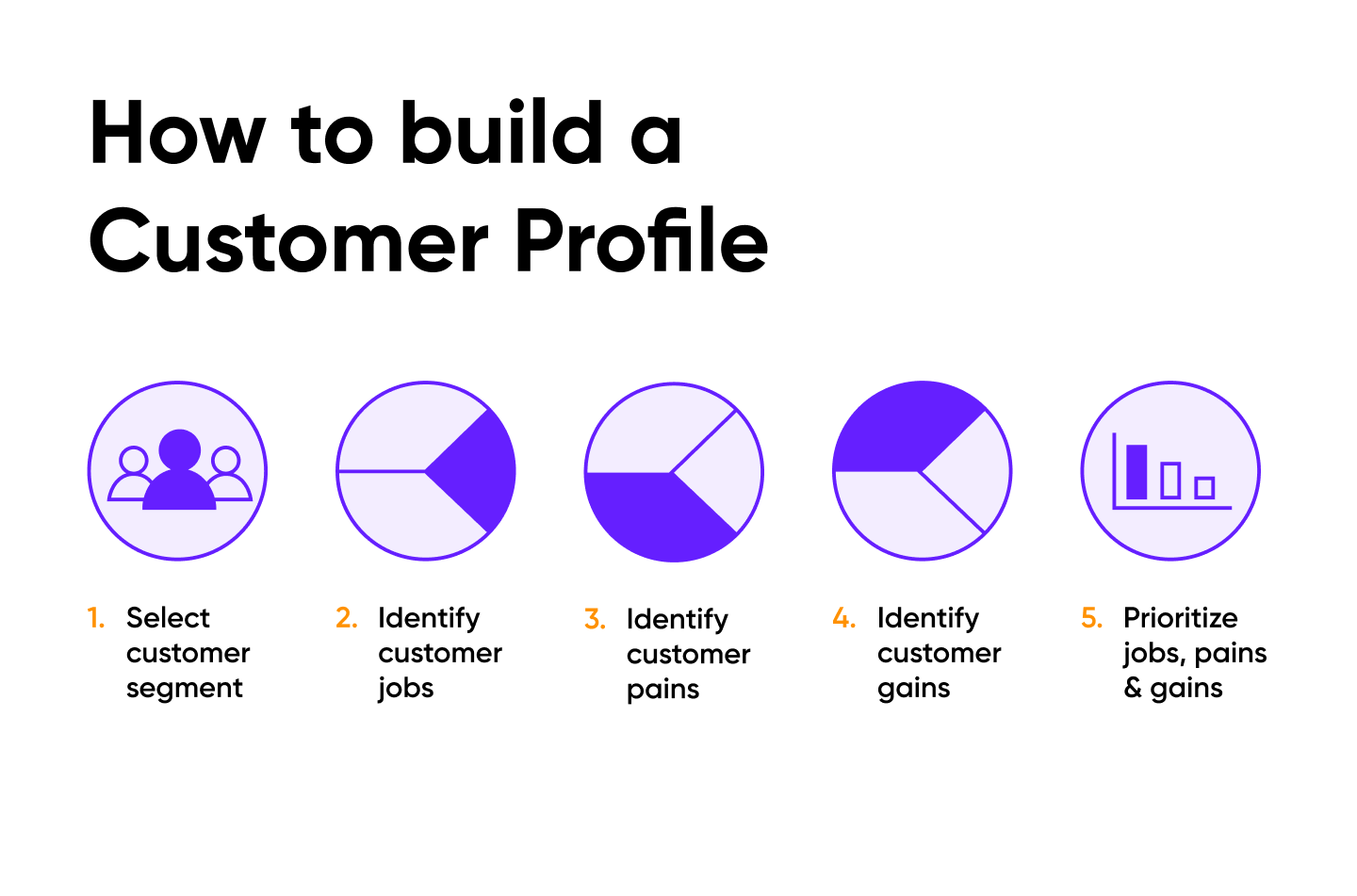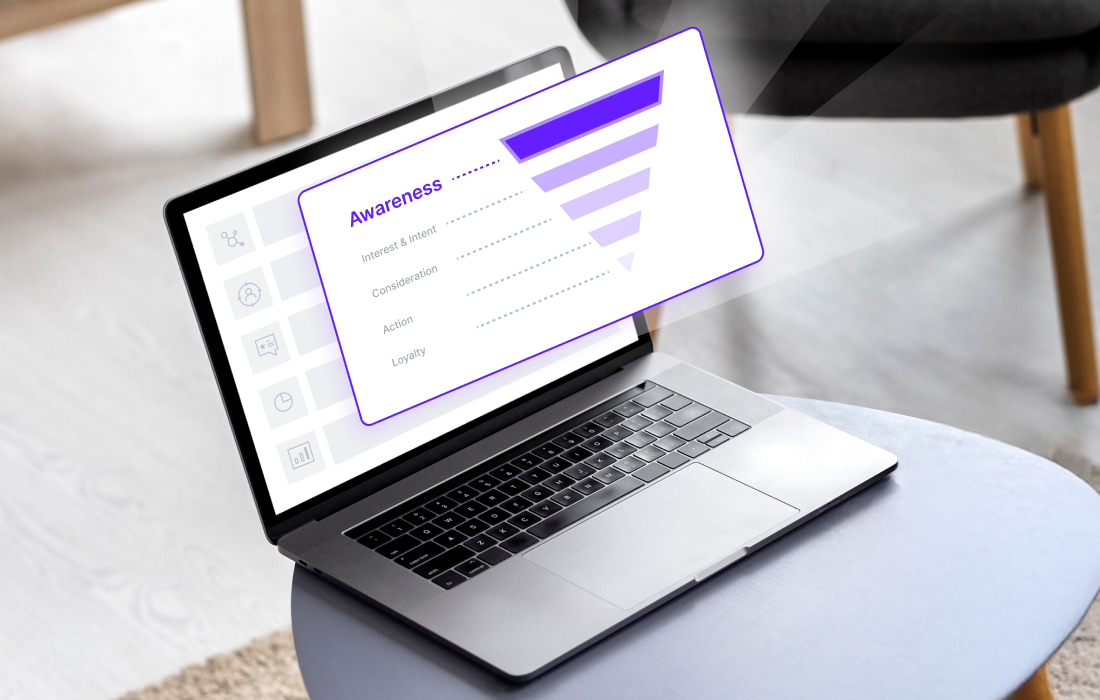Want to understand your customers and create a product that truly matters to them? Learning how to use a value proposition canvas might become your magic wand in this venture.
A value proposition canvas lets you answer fundamental questions about creating value for customers and achieve a problem-solution fit and, as a result, product-market fit. It can be applied during the initial research phase of a new product or the refining stage of the existing one. Simply put, if you aim to create a product that brings real value and wins the hearts of your customers, you should understand why people should use it beforehand.
In this article, we’ll focus on a customer part of the value proposition canvas, explain how to analyze your customers, and provide a list of questions for better research.
“People don’t buy WHAT you do, they buy WHY you do it.” — Simon Sinek
Value proposition canvas explained
The value proposition canvas is a tool designed to help create products that users really need and want. It is a way to organize and structure information about users and customers and map it to meet these needs, solve pains, and deliver expected benefits.
The canvas consists of two main blocks:
- customer segment — this is where a problem is defined;
- product segment — this is where a solution is defined.
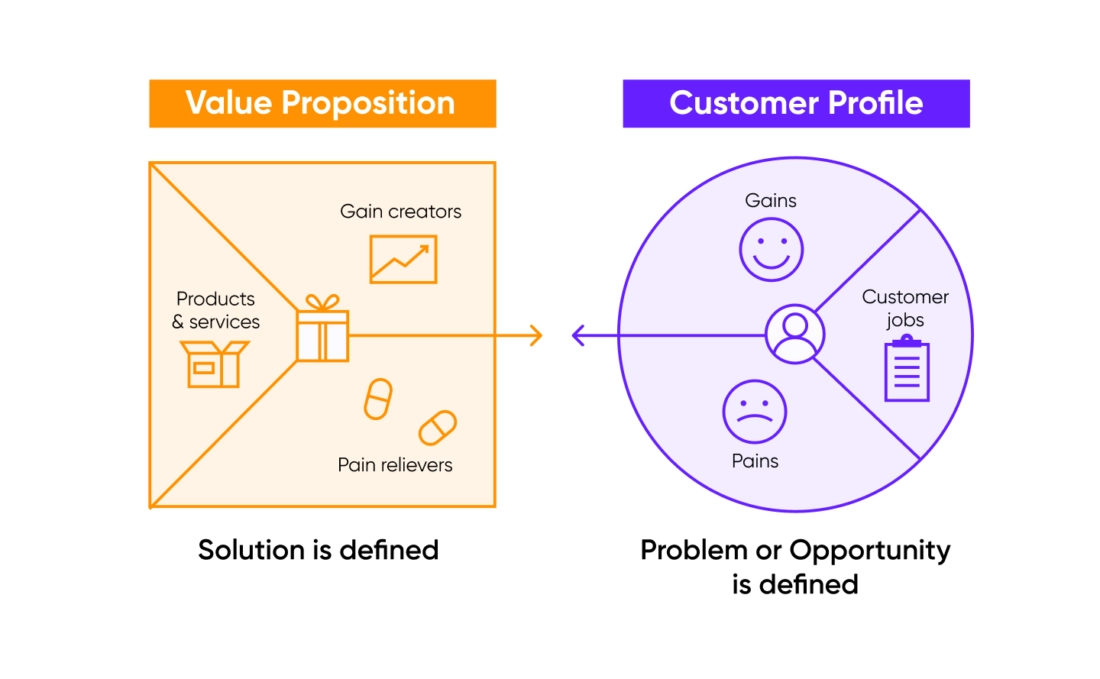
Why is a customer profile important?
The customer profile is a part of the value proposition matrix that focuses on none other than your customers and helps you understand and analyze what they do regularly, how they want to be perceived in society, what they worry about, and what delights them.
People don’t just buy your product, they buy the value it delivers. Based on the customer segment profile, you’ll work on a value map defining how your product will be valuable on the market. That all will help you achieve a fit between the market (your customers) and your product.
Your product should be a red cape on a windy day that makes your customer a superhero. It’s not only about functional benefits but also emotions and the value you deliver.
How to understand the customer segment?
The most crucial thing to understand about the customer segment is that you create it beyond your product’s existing (if there are any) solutions. You should consider your customers, their day-to-day activities, concerns, needs, and gains. Putting yourself into your customers’ shoes will help you think out of the box and create even better opportunities to improve their lives with your product.
Let’s get straight to the point!
Customer jobs
This part of the customer segment covers jobs and tasks that users perform in their work or life. You can divide these jobs into four types:
-
functional jobs — these are daily processes, work responsibilities, and functional tasks that your customer does to achieve a specific goal. In general, functional jobs include all the tasks they seek to accomplish.
-
social jobs — these are more about how people want to be perceived in their society and what social value they want to bring (a person’s influence, social status, power, etc.).
-
emotional jobs — this category is about how customers perceive themselves. What makes them happy and satisfied with themselves? What do they do to feel more confident or knowledgeable?
-
supporting jobs — other than their primary functional jobs, your customers can have additional responsibilities and tasks.
You should prioritize all jobs as some are more important for customers, and some are less valuable. Also, consider the context of the job, as it creates different use cases and value proposition points — the difference between shopping in a supermarket rather than a local market can create a unique experience and, thus, a unique value proposition.
Let’s consider a real-life example of a Marketing Manager, Sally, who uses Facebook daily to promote her company. Her daily routine includes writing and publishing posts, running ad campaigns, and tracking marketing analytics for the company page.
From here, step-by-step, we’ll create a Facebook customer profile. In the further articles, we’ll analyze how Facebook could cover all the customer’s needs by either improving existing features or adding new ones.
We’ve outlined four types of Sally’s jobs:
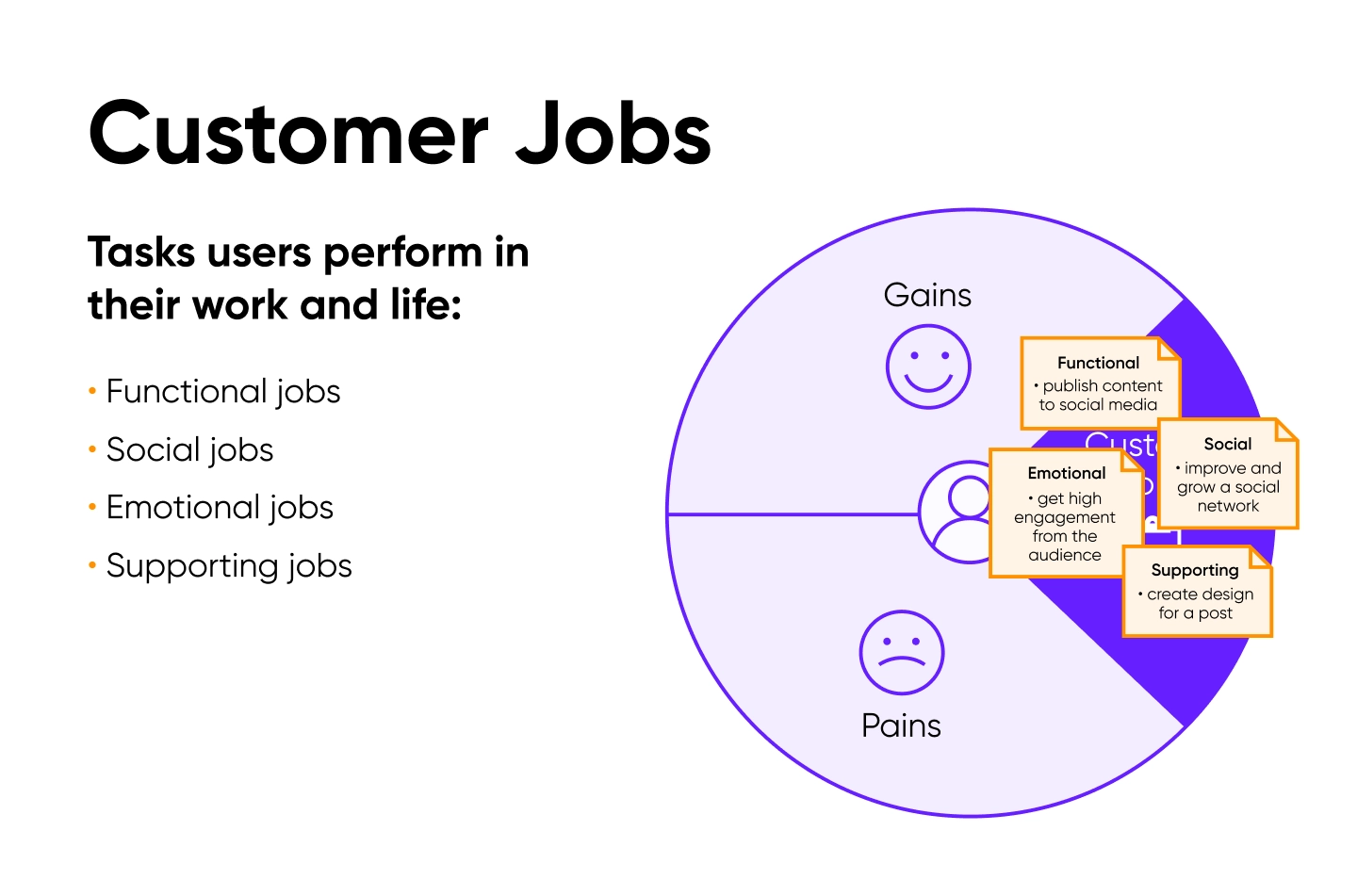
Questions to define the job priority:
-
how do customers identify the importance of a task: time, effort, money, or expected benefit?
-
what are the consequences if your customer doesn’t do this job?
-
how frequently is the job performed?
-
are there any mandatory tasks that will prevent a customer from achieving his goal?
Customer pains
Pains are the negative outcomes and experiences that customers want to avoid to get their job done properly. They can include:
-
problems related to functional jobs — if the solution doesn’t work or something goes not as planned.
-
social outcomes — it could likely be a fear of being perceived in an unpleasant light.
-
emotional problems — dissatisfaction, annoyance, frustrations regarding certain jobs.
-
risks — some negative consequences of the job that wasn’t performed properly.
-
obstacles or challenges — things that can slow down job performance.
As with the jobs, it’s important to prioritize — pay attention to customers’ pain severity. The latter depends on how important the job is for your customers. What’s more, pain should be concrete. Try to measure how long a customer can tolerate a particular negative situation and identify the breaking point.
Understanding customer pain is vital to tailoring a solution to relieve those pains and help omit negative outcomes and experiences.
Getting back to our example — Sally also has pains creating and managing content via Facebook. She faces various problems, obstacles, and risks that complicate the performance of her marketing activities.
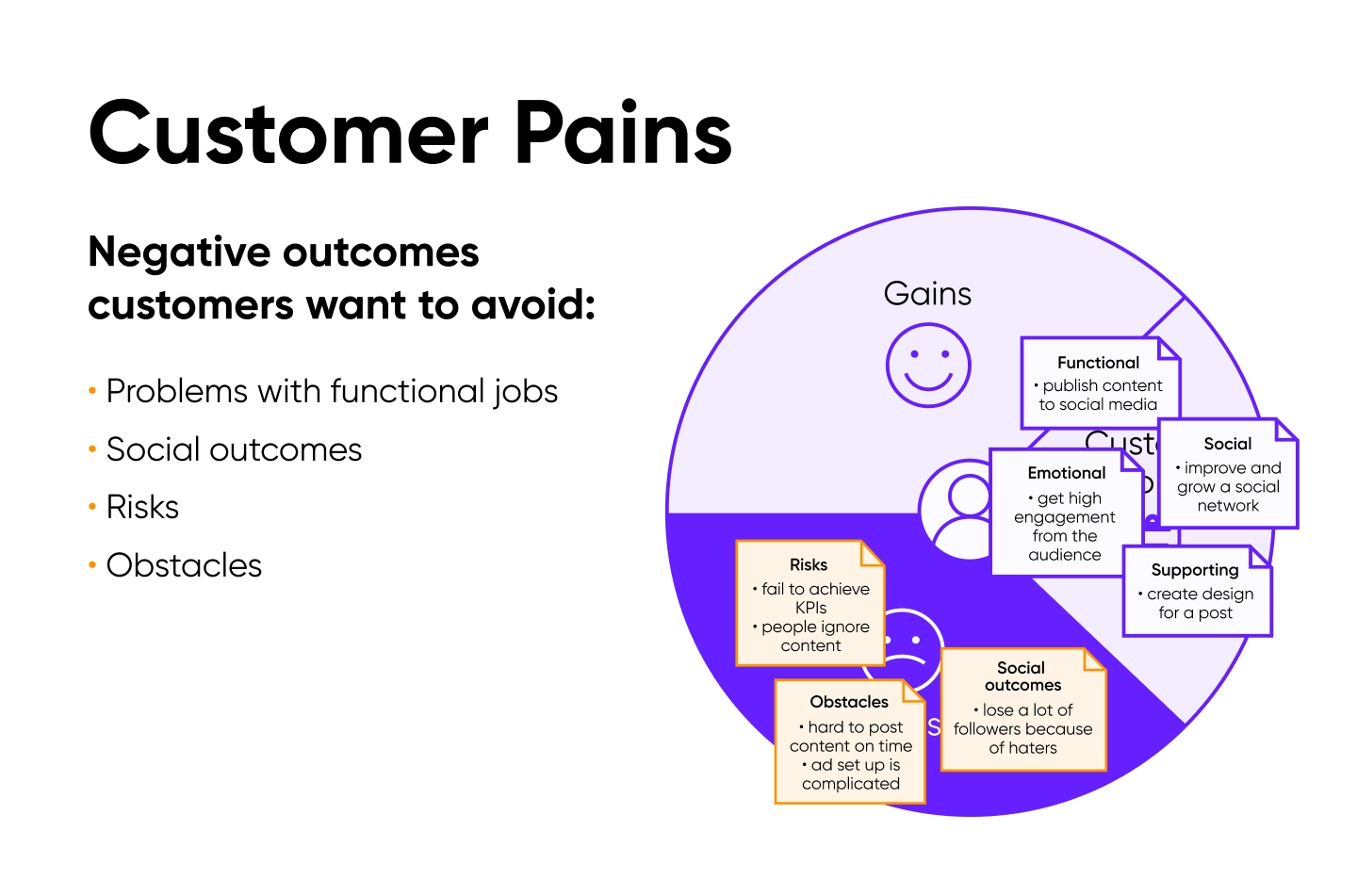
Questions to define the pain priority:
-
what are the major obstacles and problems that customers currently face?
-
what risks are customers trying to avoid? (financial, social, technical). If something were to go wrong, what would it be?
-
how are current propositions underperforming for your customers?
-
which features are they missing?
-
are there performance issues that annoy them or malfunctions they refer to?
Understanding customer pain is vital to tailoring a solution that truly helps. That’s where continuous user research plays a key role.
Customer gains
We define gains as outcomes your customers aspire to achieve with their jobs. Those gains make your customers happier and job-to-be-done easier. Depending on the priority, there can be multiple types of gain:
-
required — these are gains that are essential for a solution to work.
-
expected — these are the outcomes customers expect with their solution, although they aren’t mandatory.
-
desired — gains your customers would like to achieve but are not expecting. This can be a nice and convenient app interface.
-
unexpected — the outcomes that delight your customers. These can be your opportunity to gain a competitive advantage by creating unique features to cover unexpected gains.
Consider how relevant particular gains are for customers — some can be more crucial than others, so remember to prioritize gains. Also, make them specific, find out how your users measure their success, and differentiate the gains.
Deep user research and pain and gain analysis will help you tailor better solutions within your product. This will create more benefits and a positive customer experience.
Some things motivate Sally to perform her job daily — positive outcomes she expects or needs. She wants her marketing activities to be effective and the job process convenient.
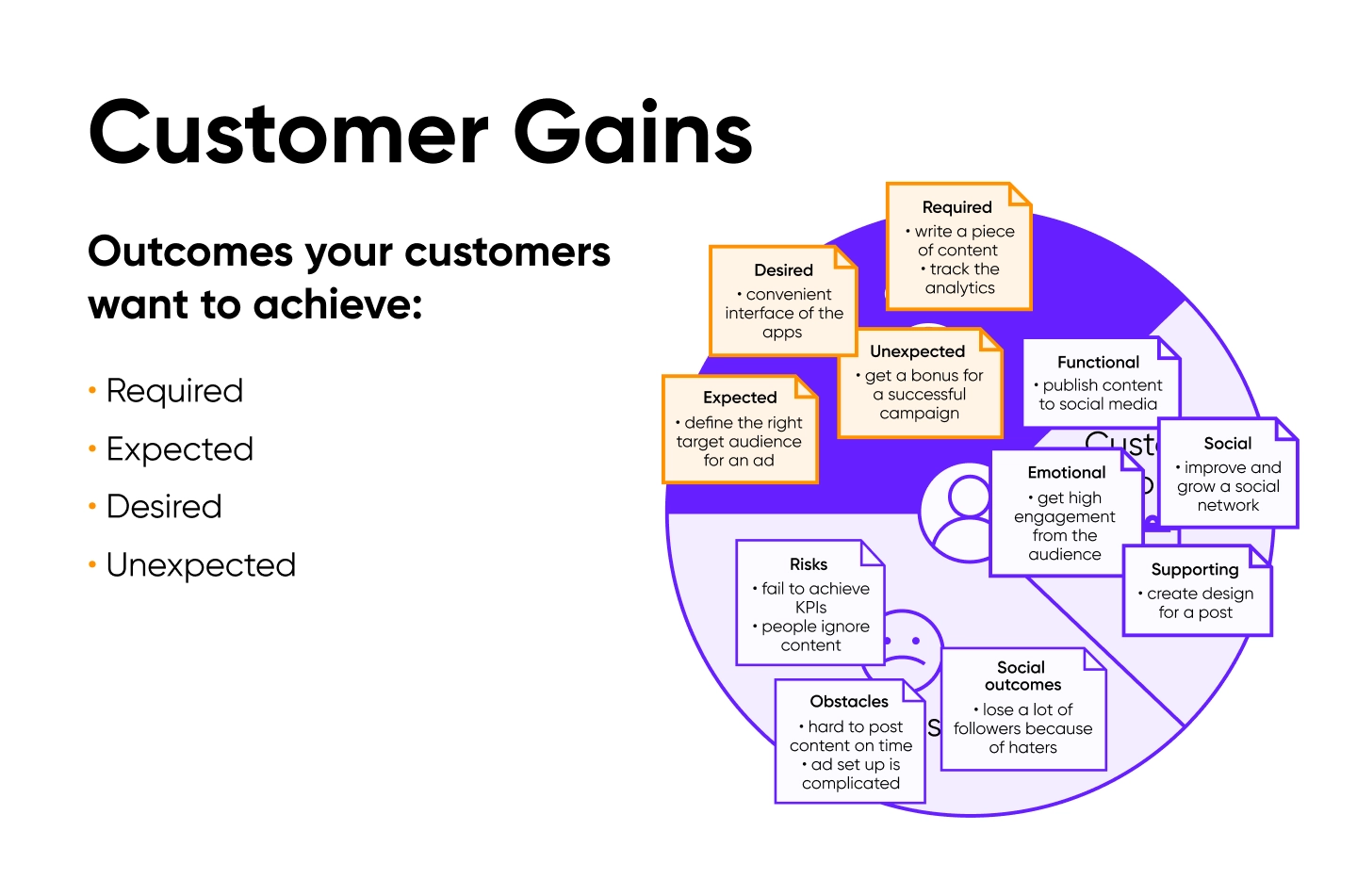
Questions to define the priority of gains:
-
how do current value propositions delight your customers? Which specific features do they enjoy? What performance and quality do they expect?
-
what would make the work or life of customers easier?
-
how to make the process of learning and onboarding easier?
-
how to increase the quality and number of services? How to cut costs?
-
what do customers expect the most (good design, guarantees, more capabilities/features, special features)?


